Characterization, Spatial Variation and Management Strategy of Sewer Sediments Collected from Combined Sewer System: A Case Study in Longgang District, Shenzhen
Abstract
:1. Introduction
2. Materials and Methods
2.1. Study Site
2.2. Sample Collection and Characterization
2.3. Correlation Analysis
3. Results
3.1. Bulk Density, Moisture Content, and pH Value
3.2. Particle Size Distribution, LHV, and Ash Content
3.3. OM, TN, TP, and TK Content
3.4. Hazardous Pollutants
4. Discussion
4.1. Bivariate Correlation Analysis
4.2. Spatial Distribution Characteristics
4.2.1. Land Uses
4.2.2. Conduits
4.2.3. Catchments
4.3. Difference between Sewer Sediment and Sewage Sludge
4.4. Feasibility of Sewer Sediments Disposal
4.4.1. Land Application
4.4.2. Incineration and Co-Incineration
4.4.3. Sanitary Landfills
4.4.4. Building Materials
5. Conclusions
Supplementary Materials
Author Contributions
Funding
Institutional Review Board Statement
Informed Consent Statement
Data Availability Statement
Conflicts of Interest
References
- Chhetri, R.K.; Bonnerup, A.; Andersen, H.R. Combined Sewer Overflow pretreatment with chemical coagulation and a particle settler for improved peracetic acid disinfection. J. Ind. Eng. Chem. 2016, 37, 372–379. [Google Scholar] [CrossRef] [Green Version]
- Meng, D.Z.; Jin, W.; Chen, K.L.; Zhang, C.; Zhu, Y.J.; Li, H.Z. Cohesive strength changes of sewer sediments during and after ultrasonic treatment: The significance of bound extracellular polymeric substance and microbial community. Sci. Total Environ. 2020, 723, 138029. [Google Scholar] [CrossRef]
- Fan, C.Y.; Field, R.; Pisano, W.C.; Barsanti, J.; Joyce, J.J.; Sorenson, H. Sewer and Tank Flushing for Sediment, Corrosion, and Pollution Control. J. Water Res. Plan. Manag. 1999, 127, 1–7. [Google Scholar] [CrossRef]
- Ashley, R.; Crabtree, B.; Fraser, A.; Hvitved-Jacobsen, T. European research into sewer sediments and associated pollutants and processes. J. Hydraul. Eng. 2003, 129, 267–275. [Google Scholar] [CrossRef]
- Suarez, J.; Puertas, J. Determination of COD, BOD, and suspended solids loads during combined sewer overflow (CSO) events in some combined catchments in Spain. Ecol. Eng. 2005, 24, 199–217. [Google Scholar] [CrossRef]
- Safari, M.J.S.; Aksoy, H.; Unal, N.E.; Mohammadi, M. Non-deposition self-cleansing design criteria for drainage systems. J. Hydro-Environ. Res. 2017, 14, 76–84. [Google Scholar] [CrossRef]
- Liu, Y.; Ni, B.J.; Ganigue, R.; Werner, U.; Sharma, K.R.; Yuan, Z. Sulfide and methane production in sewer sediments. Water Res. 2015, 70, 350–359. [Google Scholar] [CrossRef]
- Zuo, Z.; Chang, J.; Lu, Z.; Wang, M.; Lin, Y.; Zheng, M.; Zhu, D.; Yu, T.; Huang, X.; Liu, Y. Hydrogen sulfide generation and emission in urban sanitary sewer in China: What factor plays the critical role? Environ. Sci. Water Res. Technol. 2019, 5, 839–848. [Google Scholar] [CrossRef]
- Chen, H.; Ye, J.F.; Zhou, Y.F.; Wang, Z.N.; Jia, Q.L.; Nie, Y.H.; Li, L.; Liu, H.; Benoit, G. Variations in CH4 and CO2 productions and emissions driven by pollution sources in municipal sewers: An assessment of the role of dissolved organic matter components and microbiota. Environ. Pollut. 2020, 263, 114489. [Google Scholar] [CrossRef]
- Banasiak, R.; Verhoeven, R.; De Sutter, R.; Tait, S. The erosion behaviour of biologically active sewer sediment deposits: Observations from a laboratory study. Water Res. 2005, 39, 5221–5231. [Google Scholar] [CrossRef] [PubMed]
- Li, R.; Hua, P.; Cai, J.; Wang, X.; Zhu, Y.; Huang, Z.; Li, P.; Wang, Z.; Bai, Y.; Hu, B.; et al. A sixteen-year reduction in the concentrations of aquatic PAHs corresponding to source shifts in the Elbe River, Germany. J. Clean. Prod. 2019, 223, 631–640. [Google Scholar] [CrossRef]
- Staufer, P.; Dettmar, J.; Pinnekamp, J. Impact of the level of approximation on the modeling flushing waves. Water Pract. Technol. 2007, 2, wpt2007036. [Google Scholar] [CrossRef]
- Li, J.Y.; Gao, J.F.; Thai, P.K.; Mueller, J.F.; Yuan, Z.G.; Jiang, G.M. Transformation of illicit drugs and pharmaceuticals in sewer sediments. Environ. Sci. Technol. 2020, 54, 13056–13065. [Google Scholar] [CrossRef] [PubMed]
- Anne, O.; Paulauskiene, T. The Assessment of the Sewage and Sludge Contamination by Phthalate Acid Esters (PAEs) in Eastern Europe Countries. Sustainability 2021, 13, 529. [Google Scholar] [CrossRef]
- Li, H.Y.; Wang, M.X.; Zhang, W.W.; Zhang, Z.Y.; Zhang, X.L. Fractional Characteristics of Heavy Metals Pb, Zn, Cu, and Cd in Sewer Sediment from Areas in Central Beijing, China. J. Chem. N. Y. 2016, 2016, 9724128. [Google Scholar] [CrossRef] [Green Version]
- Ministry of Housing and Urban-Rural Development of the People’s Republic of China. Quality of Sludge from Municipal Wastewater Treatment Plant; Ministry of Housing and Urban-Rural Development of the People’s Republic of China: Beijing, China, 2009. [Google Scholar]
- Ministry of Housing and Urban-Rural Development of the People’s Republic of China. Determination Method for Municipal Sludge in Wastewater Treatment Plant; Ministry of Housing and Urban-Rural Development of the People’s Republic of China: Beijing, China, 2005. [Google Scholar]
- Lin, H.; Sun, W.C.; Yu, Y.J.; Ding, Y.Z.; Yang, Y.Y.; Zhang, Z.L.; Ma, J.W. Simultaneous reductions in antibiotics and heavy metal pollution during manure composting. Sci. Total Environ. 2021, 788, 147830. [Google Scholar] [CrossRef]
- Yang, Z.; Zhu, D.Z.; Yu, T.; Edwini-Bonsu, S.; Liu, Y.C. Case study of sulfide generation and emission in sanitary sewer with drop structures and pump station. Water Sci. Technol. 2019, 79, 1685–1694. [Google Scholar] [CrossRef]
- Yongsiri, C.; Vollertsen, J.; Rasmussen, M.; Hvitved-Jacobsen, T. Air-water transfer of hydrogen sulfide: An approach for application in sewer networks. Water Environ. Res. 2004, 76, 81–88. [Google Scholar] [CrossRef]
- Yu, X.J.; Yan, Y.; Wang, W.X. The distribution and speciation of trace metals in surface sediments from the Pearl River Estuary and the Daya Bay, Southern China. Mar. Pollut. Bull. 2010, 60, 1364–1371. [Google Scholar] [CrossRef]
- Li, X.D.; Poon, C.S.; Liu, P.S. Heavy metal contamination of urban soils and street dusts in Hong Kong. Appl. Geochem. 2001, 16, 1361–1368. [Google Scholar] [CrossRef]
- Li, H.M.; Qian, X.; Hu, W.; Wang, Y.; Gao, H. Chemical speciation and human health risk of trace metals in urban street dusts from a metropolitan city, Nanjing, SE China. Sci. Total Environ. 2013, 456, 212–221. [Google Scholar] [CrossRef]
- Tyagi, V.K.; Lo, S.L. Sludge: A waste or renewable source for energy and resources recovery? Renew. Sustain. Energy Rev. 2013, 25, 708–728. [Google Scholar] [CrossRef]
- Drechsel, P.; Qadir, M.; Wichelns, D. Wastewater: Economic Asset in an Urbanizing World; Springer: Dordrecht, The Netherlands, 2015; pp. 1–282. [Google Scholar] [CrossRef]
- Rorat, A.; Courtois, P.; Vandenbulcke, F.; Lemiere, S. Sanitary and environmental aspects of sewage sludge management. In Industrialand Municipal Sludge; Elsevier: Amsterdam, The Netherlands, 2019; pp. 155–180. [Google Scholar] [CrossRef]
- Tytła, M. Assessment of Heavy Metal Pollution and Potential Ecological Risk in Sewage Sludge from Municipal Wastewater Treatment Plant Located in the Most Industrialized Region in Poland—Case Study. Int. J. Environ. Res. Public Health 2019, 16, 2430. [Google Scholar] [CrossRef] [Green Version]
- Spanos, T.; Ene, A.; Patronidou, C.S.; Xatzixristou, C. Temporal variability of sewage sludge heavy metal content from Greek wastewater treatment plants. Ecol. Chem. Eng. Sci. 2016, 23, 271–283. [Google Scholar] [CrossRef] [Green Version]
- Fijalkowski, K.; Rorat, A.; Grobelak, A.; Kacprzak, M.J. The presence of contaminations in sewage sludge–the current situation. J. Environ. Manag. 2017, 203, 1126–1136. [Google Scholar] [CrossRef] [PubMed]
- Lv, D.; Zhu, T.; Liu, R.; Li, X.; Zhao, Y.; Sun, Y.; Wang, H.; Zhang, F.; Zhao, Q. Effects of Co-Processing Sewage Sludge in the Cement Kiln on PAHs, Heavy Metals Emissions and the Surrounding Environment. Int. J. Environ. Res. Public Health 2018, 15, 698. [Google Scholar] [CrossRef] [Green Version]
- Wang, W.; Luo, Y.X.; Qiao, W. Possible solutions for sludge dewatering in China. Front. Environ. Sci. Eng. 2010, 4, 102–107. [Google Scholar] [CrossRef]
- Chen, H.; Yan, S.H.; Ye, Z.L.; Meng, H.J.; Zhu, Y.G. Utilization of urban sewage sludge: Chinese perspectives. Environ. Sci. Pollut. Res. 2012, 19, 1454–1463. [Google Scholar] [CrossRef] [PubMed]
- Yang, G.; Zhang, G.M.; Wang, H.C. Current state of sludge production, management, treatment and disposal in China. Water Res. 2015, 78, 60–73. [Google Scholar] [CrossRef] [PubMed]
- Wei, L.L.; Zhu, F.Y.; Li, Q.Y.; Xue, C.H.; Xia, X.H.; Yu, H.; Zhao, Q.L.; Jiang, J.Q.; Bai, S.W. Development, current state and future trends of sludge management in China: Based on exploratory data and CO2-equivaient emissions analysis. Environ. Int. 2020, 144, 106093. [Google Scholar] [CrossRef] [PubMed]
- Duan, B.; Zhang, W.; Zheng, H.; Wu, C.; Zhang, Q.; Bu, Y. Disposal Situation of Sewage Sludge from Municipal Wastewater Treatment Plants (WWTPs) and Assessment of the Ecological Risk of Heavy Metals for Its Land Use in Shanxi, China. Int. J. Environ. Res. Public Health 2017, 14, 823. [Google Scholar] [CrossRef] [Green Version]
- Ministry of Housing and Urban-Rural Development of the People’s Republic of China. The Disposal of Sludge from Municipal Wastewater Treatment Plant-Quality of Sludge Used in Land Improvement; Ministry of Housing and Urban-Rural Development of the People’s Republic of China: Beijing, China, 2009. [Google Scholar]
- Ministry of Housing and Urban-Rural Development of the People’s Republic of China. The Disposal of Sludge from Municipal Wastewater Treatment Plant-the Quality of Sludge Used in Gardens or Parks; Ministry of Housing and Urban-Rural Development of the People’s Republic of China: Beijing, China, 2009. [Google Scholar]
- Odegaard, H.; Paulsrud, B.; Karlsson, I. Sludge disposal strategies and corresponding treatment technologies aimed at sustainable handling of wastewater sludge. Water Sci. Technol. 2014, 46, 295–303. [Google Scholar] [CrossRef]
- Ministry of Housing and Urban-Rural Development of the People’s Republic of China. The Disposal of Sludge from Municipal Wastewater Treatment Plant-Quality of Sludge Used in Separate Incineration; Ministry of Housing and Urban-Rural Development of the People’s Republic of China: Beijing, China, 2009. [Google Scholar]
- Kang, S.; Roh, J.; Jeon, E.-C. Estimating the characteristics and emission factor of ammonia from sewage sludge incinerator. Int. J. Environ. Res. Public Health 2021, 18, 2539. [Google Scholar] [CrossRef] [PubMed]
- Ministry of Housing and Urban-Rural Development of the People’s Republic of China. The Disposal of Sludge from Municipal Wastewater Treatment Plant-Quality of Sludge for Co-Landfilling; Ministry of Housing and Urban-Rural Development of the People’s Republic of China: Beijing, China, 2009. [Google Scholar]
- Han, Z.; Ma, H.; Shi, G.; He, L.I.; Wei, L.; Shi, Q. A review of groundwater contamination near municipal solid waste landfill sites in China. Sci. Total Environ. 2016, 569, 1255–1264. [Google Scholar] [CrossRef]
- Madon, I.; Drev, D.; Likar, J. Long-term risk assessments comparing environmental performance of different types of sanitary landfills. Waste Manag. 2019, 96, 96–107. [Google Scholar] [CrossRef] [PubMed]
- Wang, Y.N.; Xu, R.; Kai, Y.; Wang, H.W.; Sun, Y.J.; Zhan, M.L.; Gong, B.H. Evaluating the physicochemical properties of refuse with a short-term landfill age and odorous pollutants emission during landfill mining: A case study. Waste Manag. 2021, 121, 77–86. [Google Scholar] [CrossRef]
- Chen, M.X.; Zheng, Y.; Zhou, X.M.; Li, L.; Wang, S.D.; Zhao, P.Q.; Lu, L.C.; Cheng, X. Recycling of paper sludge powder for achieving sustainable and energy-saving building materials. Constr. Build. Mater. 2019, 229, 116874. [Google Scholar] [CrossRef]
- Taki, K.; Gahlot, R.; Kumar, M. Utilization of fly ash amended sewage sludge as brick for sustainable building material with special emphasis on dimensional effect. J. Clean. Prod. 2020, 275, 123942. [Google Scholar] [CrossRef]
- Xu, G.R.; Zou, J.L.; Li, G.B. Effect of sintering temperature on the characteristics of sludge ceramsite. J. Hazard. Mater. 2008, 150, 394–400. [Google Scholar] [CrossRef]
- Xu, G.R.; Zou, J.L.; Li, G.B. Stabilization of heavy metals in ceramsite made with sewage sludge. J. Hazard. Mater. 2008, 152, 56–61. [Google Scholar] [CrossRef]
- Wang, Y.; Yang, J.; Xu, H.; Liu, C.; Shen, Z.; Hu, K. Preparation of Ceramsite Based on Waterworks Sludge and Its Application as Matrix in Constructed Wetlands. Int. J. Environ. Res. Public Health 2019, 16, 2637. [Google Scholar] [CrossRef] [Green Version]
- Nakic, D.; Vouk, D.; Serdar, M.; Cheeseman, C.R. Use of MID-MIX® treated sewage sludge in cement mortars and concrete. Eur. J. Environ. Civ. Eng. 2020, 24, 1483–1498. [Google Scholar] [CrossRef]
- Ministry of Housing and Urban-Rural Development of the People’s Republic of China. The Disposal of Sludge from Municipal Wastewater Treatment Plant-Quality of Sludge Used in Making Brick; Ministry of Housing and Urban-Rural Development of the People’s Republic of China: Beijing, China, 2010. [Google Scholar]

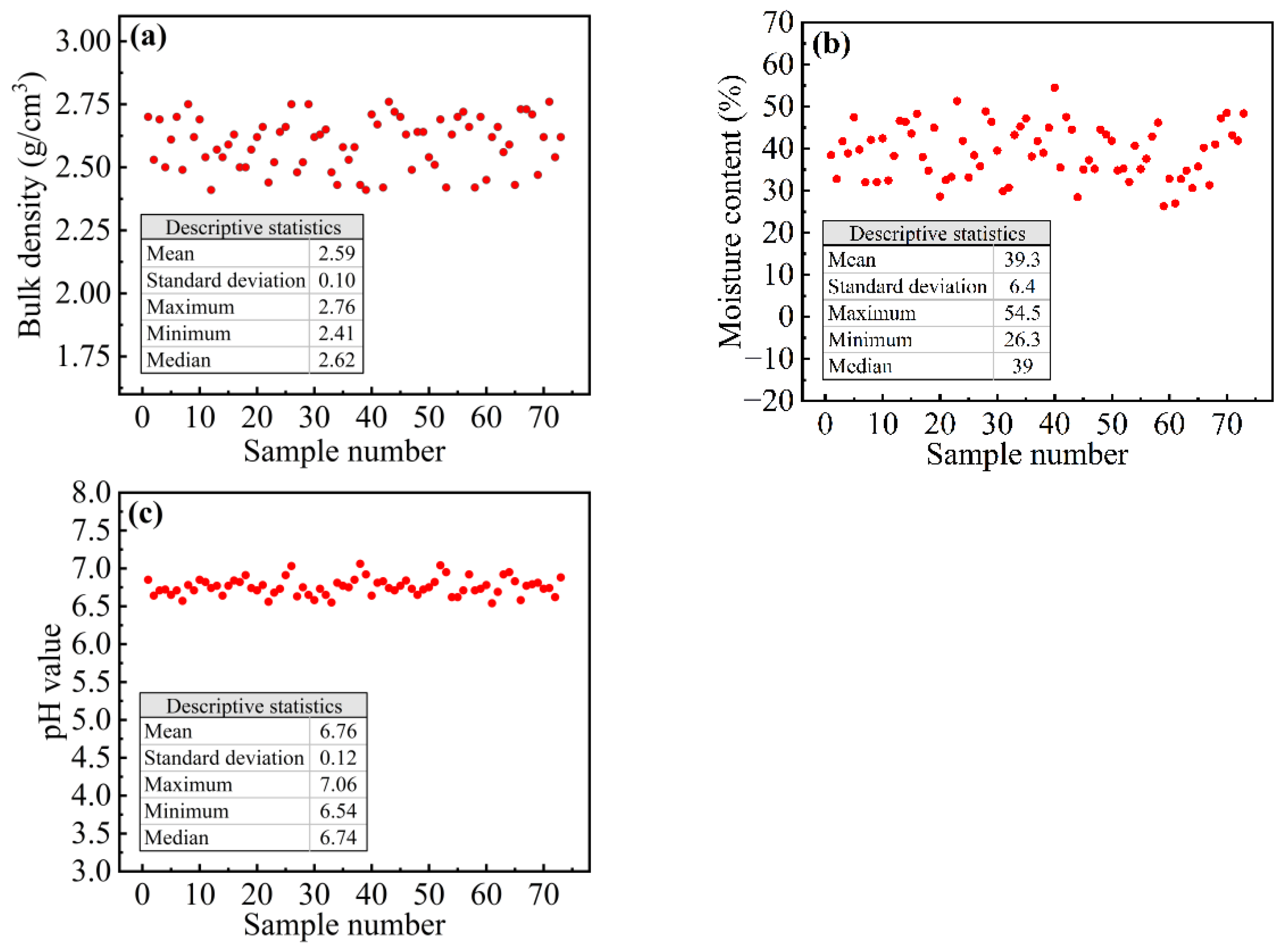
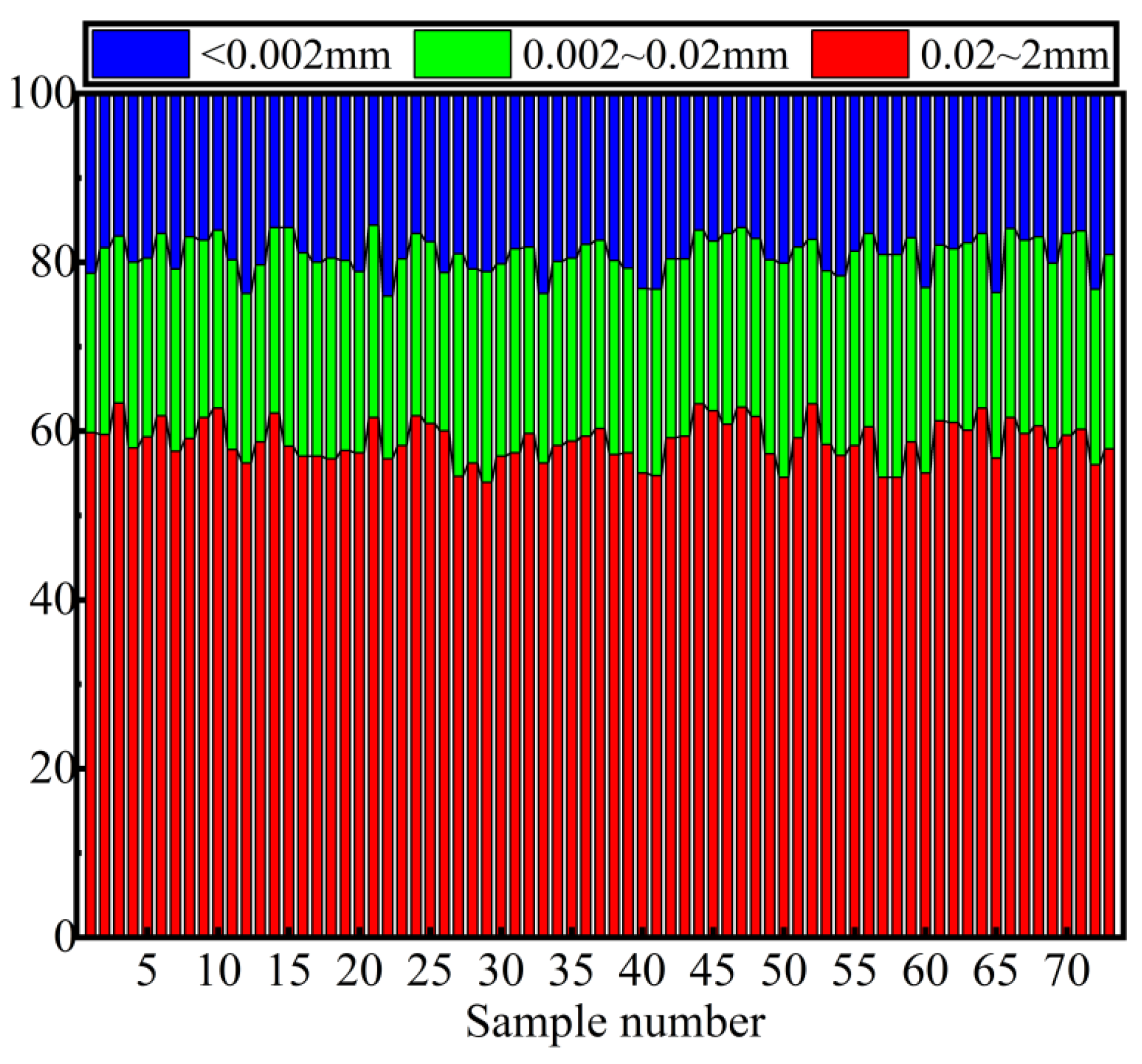
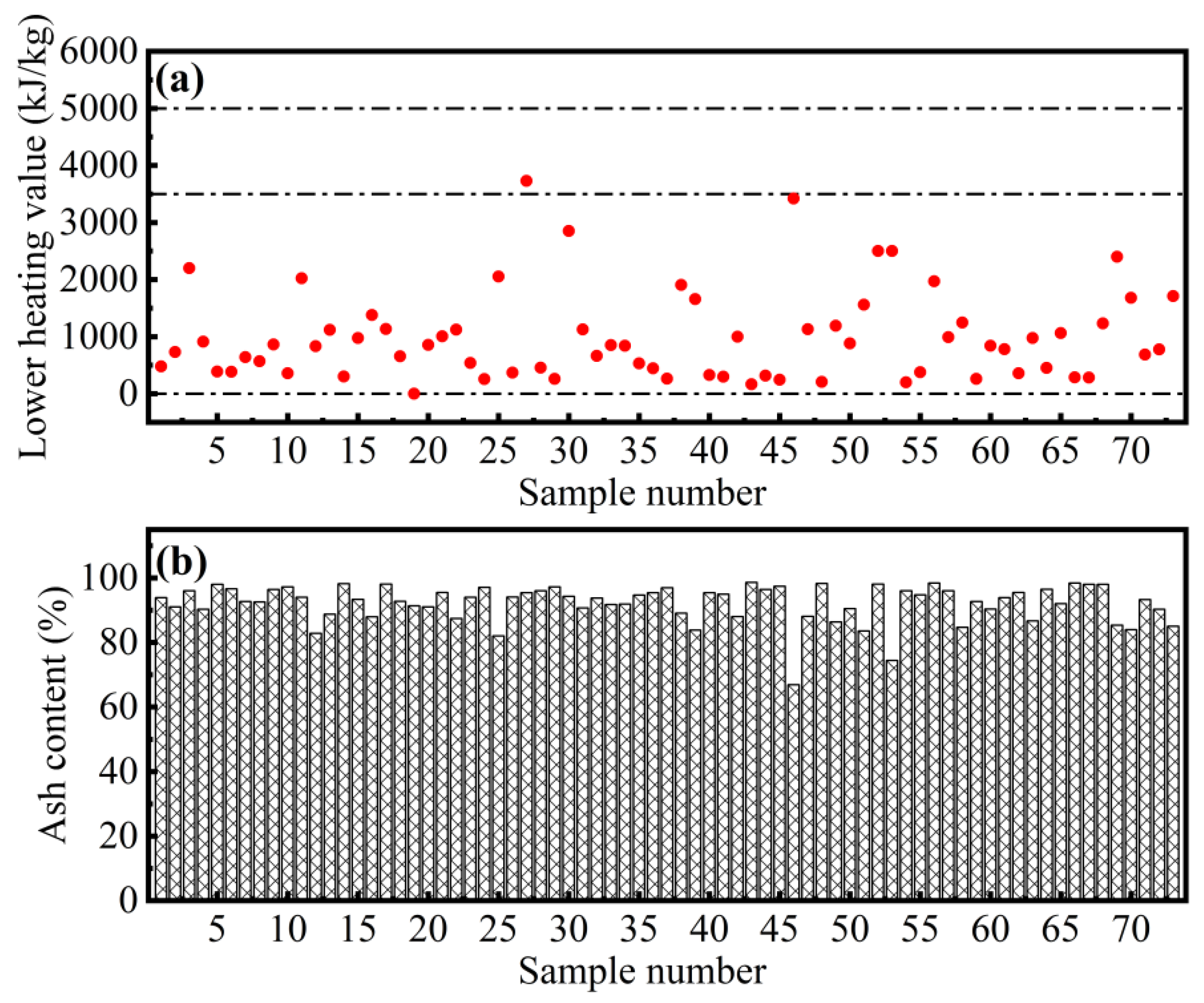

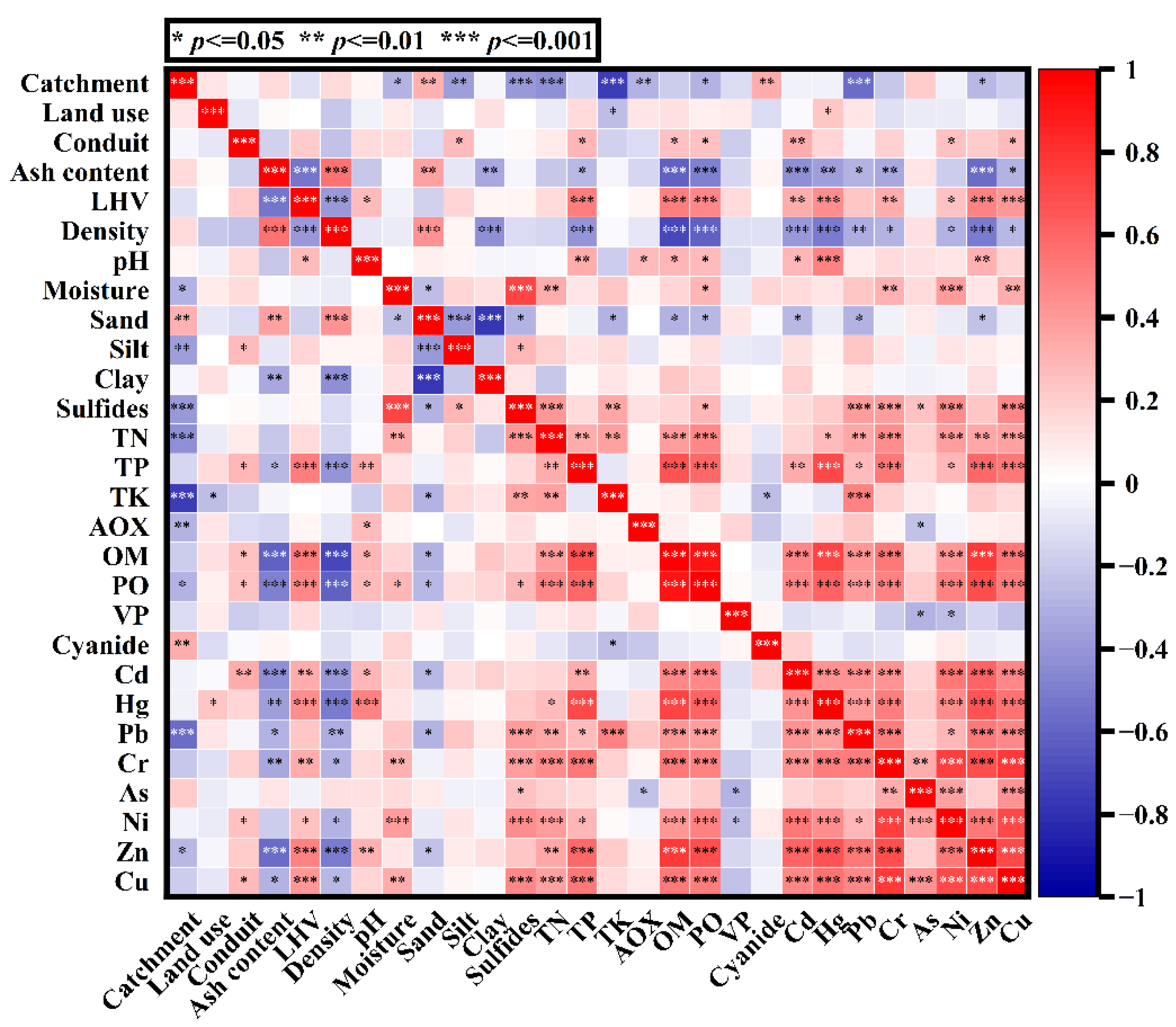
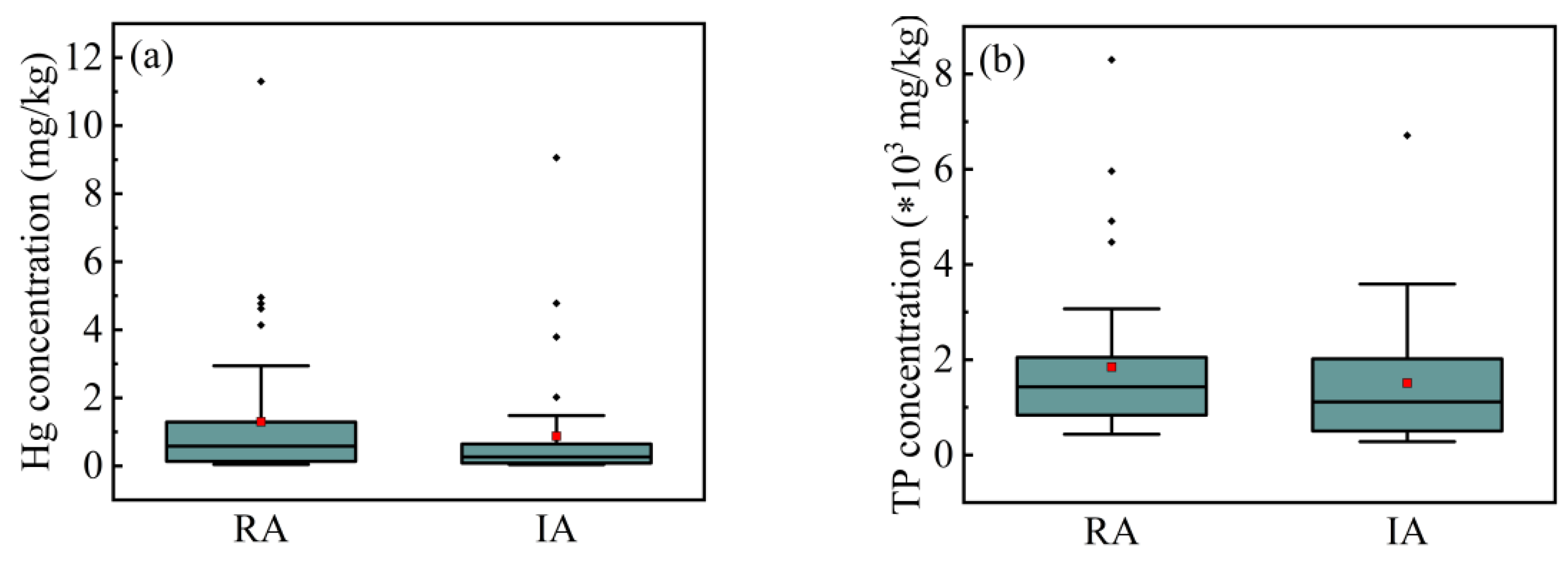

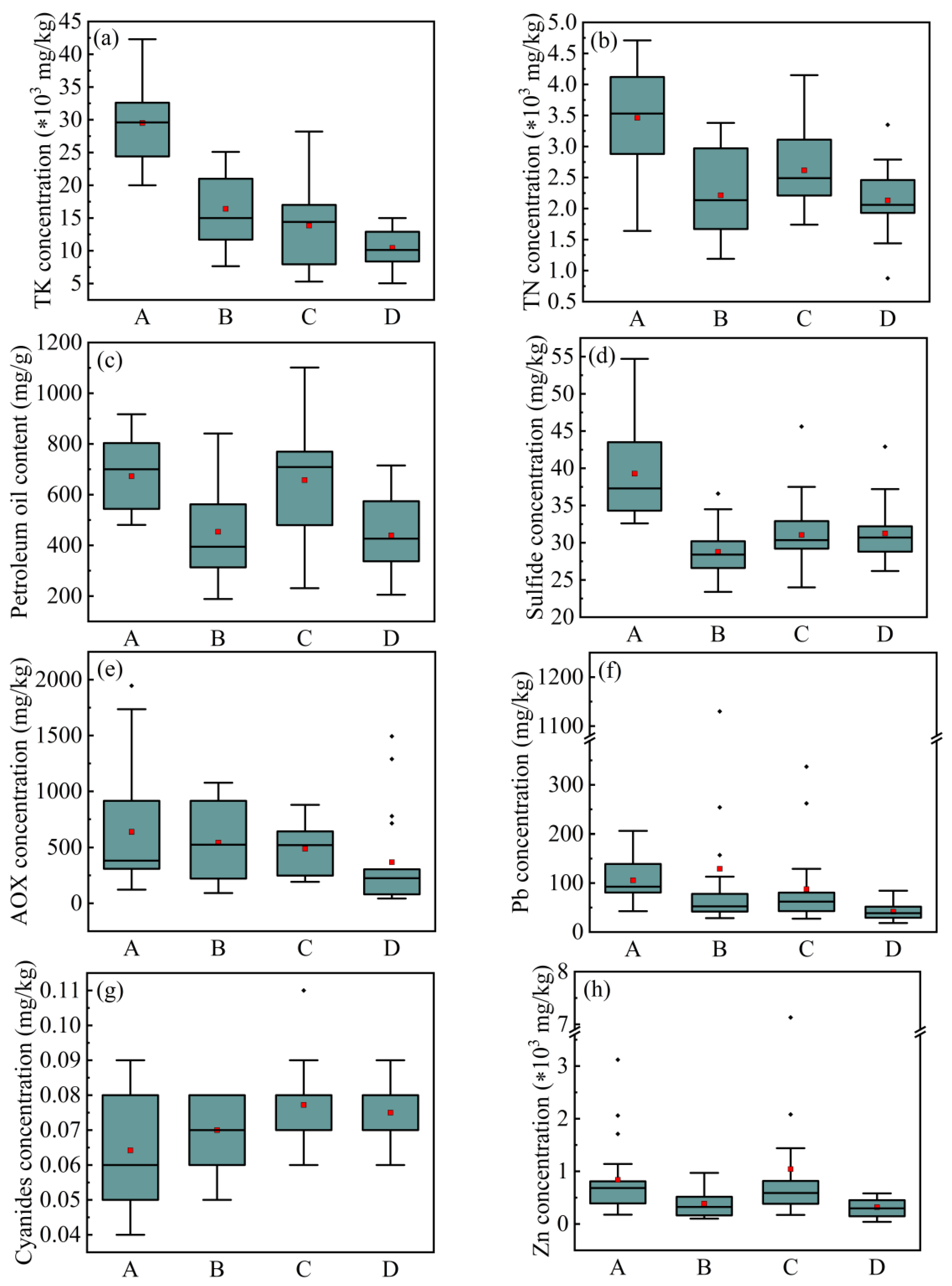
Publisher’s Note: MDPI stays neutral with regard to jurisdictional claims in published maps and institutional affiliations. |
© 2021 by the authors. Licensee MDPI, Basel, Switzerland. This article is an open access article distributed under the terms and conditions of the Creative Commons Attribution (CC BY) license (https://creativecommons.org/licenses/by/4.0/).
Share and Cite
Luo, Y.; Bao, S.; Yang, S.; Zhang, Y.; Ping, Y.; Lin, C.; Yang, P. Characterization, Spatial Variation and Management Strategy of Sewer Sediments Collected from Combined Sewer System: A Case Study in Longgang District, Shenzhen. Int. J. Environ. Res. Public Health 2021, 18, 7687. https://doi.org/10.3390/ijerph18147687
Luo Y, Bao S, Yang S, Zhang Y, Ping Y, Lin C, Yang P. Characterization, Spatial Variation and Management Strategy of Sewer Sediments Collected from Combined Sewer System: A Case Study in Longgang District, Shenzhen. International Journal of Environmental Research and Public Health. 2021; 18(14):7687. https://doi.org/10.3390/ijerph18147687
Chicago/Turabian StyleLuo, Yongpeng, Shenxu Bao, Siyuan Yang, Yimin Zhang, Yang Ping, Chao Lin, and Pan Yang. 2021. "Characterization, Spatial Variation and Management Strategy of Sewer Sediments Collected from Combined Sewer System: A Case Study in Longgang District, Shenzhen" International Journal of Environmental Research and Public Health 18, no. 14: 7687. https://doi.org/10.3390/ijerph18147687





